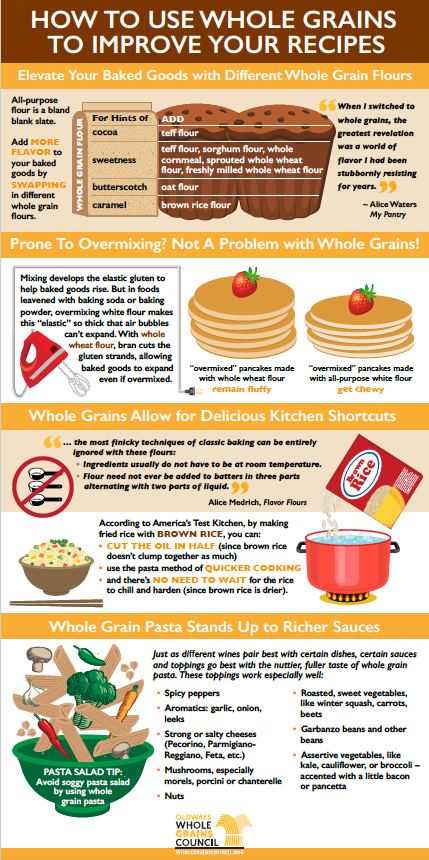Share This
With a steady source of butter, sugar, and artisan chocolate at their disposal, pastry chefs have a knack for navigating direct routes to our taste buds. But recently the biggest source of flavor in baked goods is coming from somewhere you would never expect: the flour.
“It’s another element you can get creative with,” explains Kristina Razon, a baker at Four & Twenty Blackbirds in Brooklyn, NY. The plum buckwheat streusel pie from Four & Twenty Blackbirds’ summer menu earned widespread praise that rippled beyond New York City. With an understated chalkboard menu simply listing pie flavors, there’s no room for paragraphs about the health benefits of buckwheat or the local farm that it came from — the flavors simply speak for themselves.
“I think letting the flour shine is really important,” explains Razon, of her approach to working with whole grain flours like buckwheat. Razon’s personal and professional experiments developing whole grain pie crusts and baked goods made with local flours from the NYC Greenmarket awakened a culinary curiosity in the regional grain system and the best way to leverage these ingredients.
A cursory Google search into these topics left her wanting more, so Razon turned her passion into a free e-book called the Guide to Northeast Grains (which also served as the capstone project of her Master’s degree in Sustainable Food Systems from Green Mountain College). Razon credits many heroes in helping these locally grown whole grain flours find their way into more bakeries and homes; these include June Russell, who helped get GrowNYC’s Greenmarket Regional Grains Project off the ground, as well as all of the farmers and millers she connected with along the way. “I couldn’t really do a guide without being informed by those growing and milling the grains,” explained Razon of her journey.
Razon’s experience provides a window into a prominent new force helping bring whole grains to more people: the local food movement. Up until recently, alternative grains and whole grain flours were foreign territory to most mainstream bakers. But as a surge of locally grown grains and whole grain flours began popping up at farmers markets and specialty stores, bakers and pastry chefs seized their opening into the growing farm-to-table movement. The rich flavor complexities are concentrated in the nutritious bran and germ of the grain, so local millers are hesitant to sift them out into white flour, for fear of diminishing the value and taste of the product. Thus, local grain systems are ushering in crops that are bred to be used as nature intended – with all three parts of their original kernel.
From the Maine Grain Alliance and Grist Mill, to the Washington State University Bread Lab, investments in regional grain systems are happening all across the country, and bakers are taking note. Whether you’re a professional pastry chef or a pastry novice, there are plenty of resources and cookbooks to immerse yourself in the world of whole grain baking. Good to the Grain, by Kim Boyce, and Flavor Flours, by Alice Medrich are some of Razon’s favorite books to reference, and happen to be among our favorites as well. For more information on the culinary benefits of whole grains, check out our new infographic, below. (Kelly)



Add a Comment